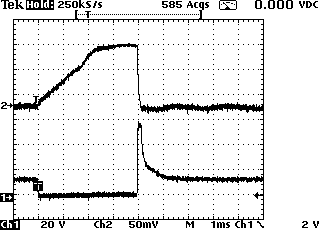

Injector current from low amp current probe looking at a late ford big block injector. Triggered off the voltage signal, (Ch1) the current trace shows amperage building to a point where the pintle actually lifts off its seat, about two third's of the total opening amps just to get it off its seat. This can be seen in the waveform better by opening up the timebase.
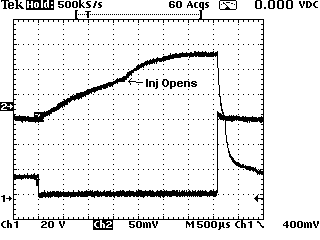
Opening up the timebase to 500us allows this event to be seen more clearly here.
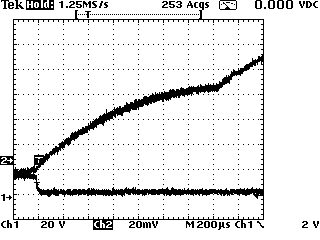
Opening the voltage scale and the timebase again gives an even better picture.
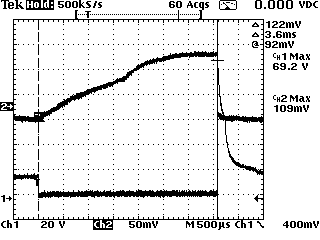
Ontime can be viewed in the waveform, 3.6ms.
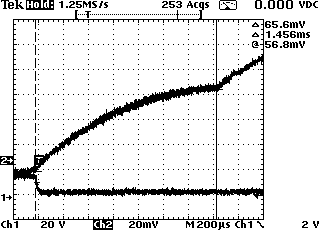
Just what is the actual ontime here if it takes 1.4ms just to get the pintle off its seat?
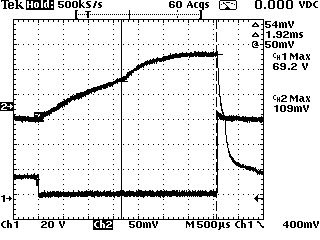
1.9ms? Ontime reported by scantool, has to be total time injector is turned on. Maybe this should be called Opentime. Ontime isn't the issue here with the current waveform, what will be important in the waveform, is that the mechanical action of the injector can be viewed. As well as electrical demands. High and low resistance will show up easily, weak springs, sticking, bouncing pintles, etc.
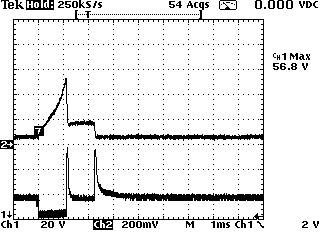
94 Chev PU 5.7 TBI Injector, Peak and Hold, PCM hits the Injector hard with current enough to get it open (about 4 amps) then internally switches in a resistive circuit lowering output just enough to hold it open. Easily seen in the current waveform.
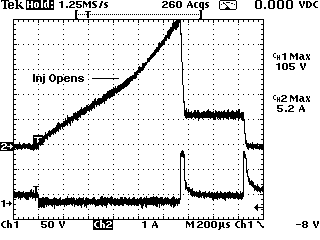
Injector pintle lift can be seen in the waveform just slightly here, but is evident. How does the PCM know the injector is open after flooding it with the 4 amps to get it open? I suppose it assumes its open. Or does it know how much current it sent to the injector? Maybe its a time thing.
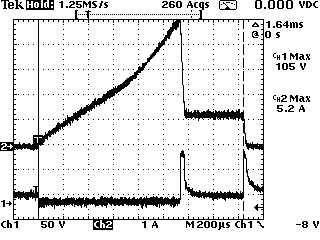
Speaking of time, Mastertech reported ontime on this app at .8 to .9ms, the waveform says 1.6ms.
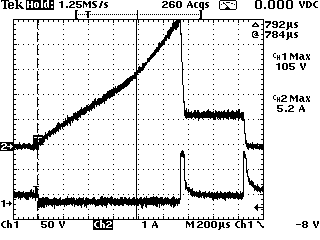
If it takes just under .8ms to get the injector open,

and its open just over .8ms, then true ontime is being reported. How is it done? Interesting...
See a case study here
See misc here